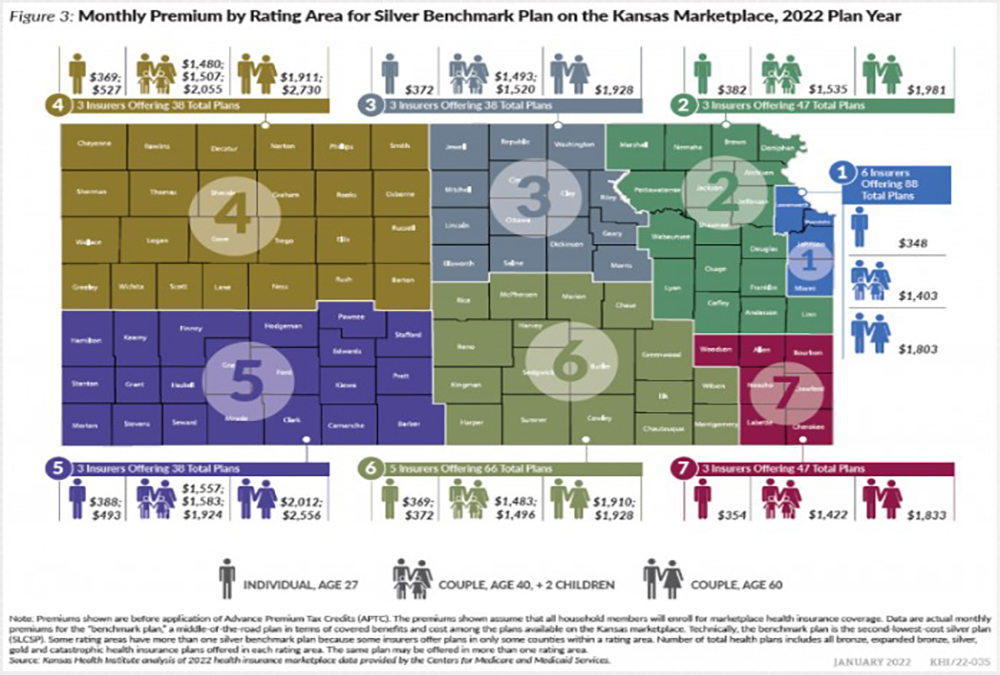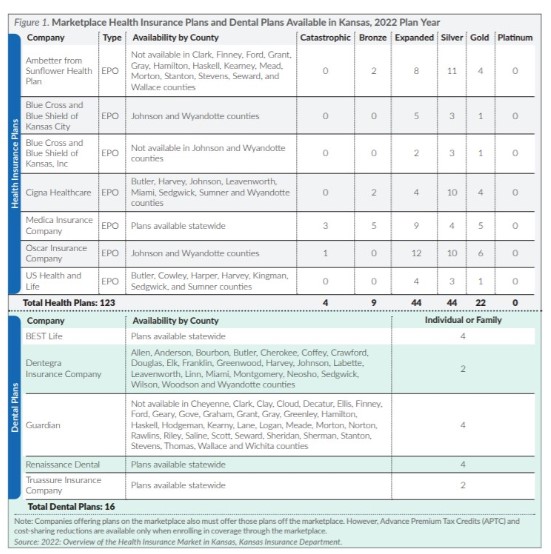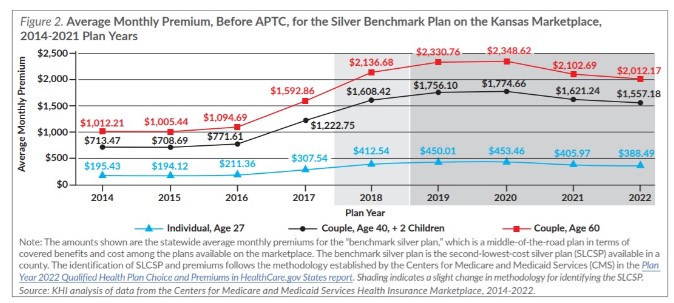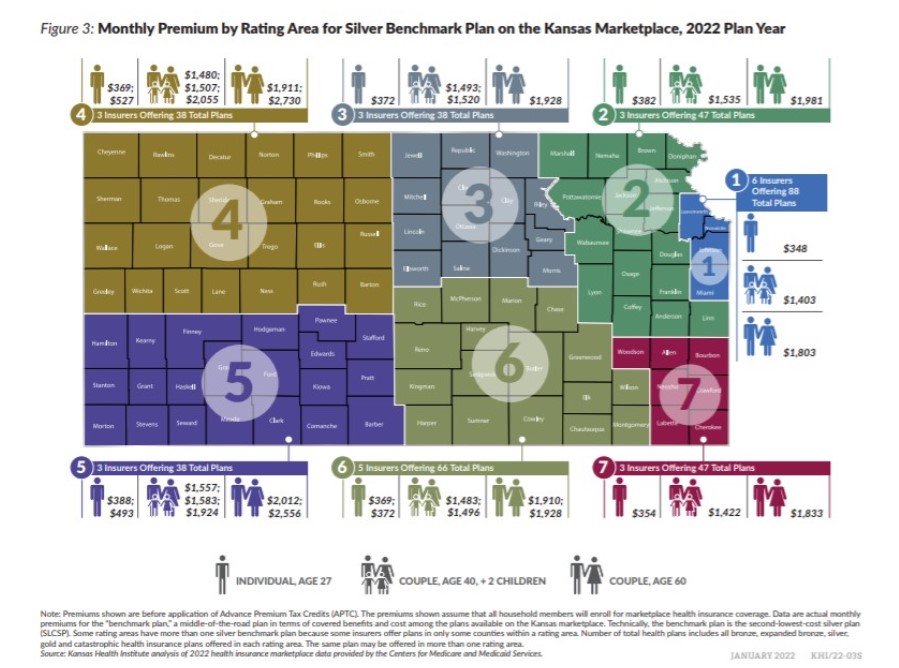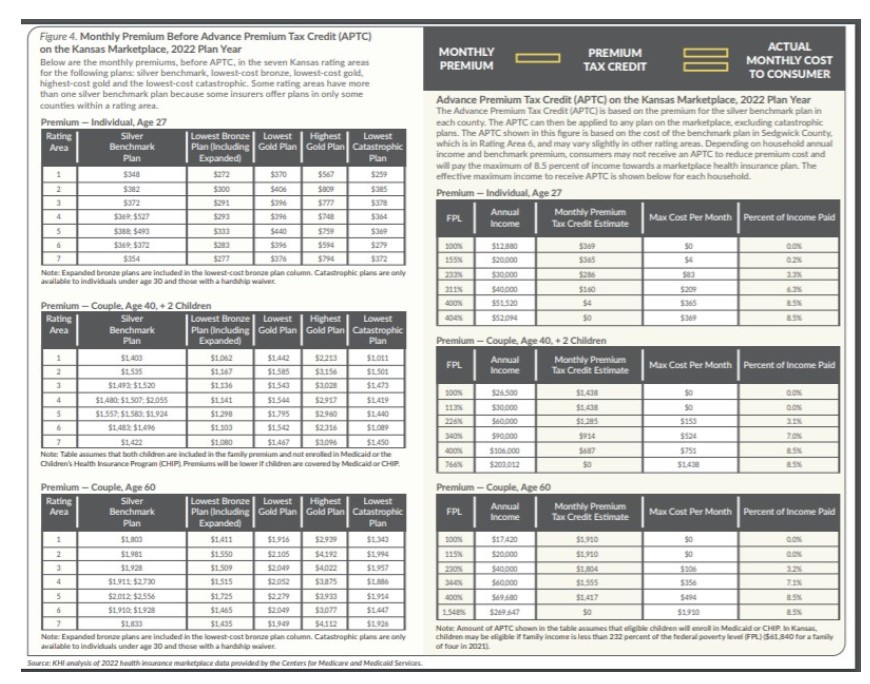Although the ARPA made changes in APTC eligibility and the calculation of APTC, the rules for cost-sharing reduction (CSR) subsidies remain the same. Under the ACA, consumers with household income between 100 and 250 percent FPL ($26,500 to $66,250 for a family of four in 2021) who enroll in silver plans continue to be eligible for CSR subsidies to lower their out-of-pocket expenses. CSR subsidies are not available with any other metal level. For example, the deductible could be lowered to $600 with co-payment/co-insurance for a benchmark silver plan for an individual in Sedgwick County with income between 100 and 150 percent FPL. An individual in Sedgwick County with income between 151 and 200 percent FPL could see their deductible lowered to $1,400 with co-payment/co-insurance for a benchmark plan.
Factors Impacting Enrollment on the ACA Marketplace
For the 2022 OEP, several factors may impact enrollment.
Enhanced APTC. For some consumers, the enhanced APTC provisions in the ARPA will make health plans on the ACA marketplace more affordable and likely increase the number of enrollees.
Increased Navigator Funding. To help people enroll in coverage through the ACA marketplace, the Biden Administration announced in August that it was awarding $80 million in grants for the 2022 plan year to 60 navigator organizations across the country. Navigators, including community and consumer-focused nonprofit organizations, faith-based organizations, and hospitals, are authorized under the ACA to assist consumers with enrollment applications and identifying financial assistance. In Kansas, two organizations, Community Care Network of Kansas (CCNK) and Thrive Allen County, received almost $1.7 million for the period of August 2021 through August 2022. CCNK will be serving consumers statewide and Thrive will be serving consumers in 42 rural and geographically isolated counties.
Special Enrollment Period for Low-Income Households. Starting in 2022, consumers with household income between 100 to 150 percent FPL ($39,750 for a family of four in 2021) will be allowed to enroll throughout the year, making it easier for low-income individuals and families to sign up for coverage.
Looking Ahead
The addition of more plans and insurers, decreasing premiums, the continuing impact of COVID-19, and the enhanced APTC benefits provided by the ARPA could be expected to again increase enrollment nationwide and in Kansas for the 2022 plan year. While many consumers will likely take advantage of the enhanced APTC benefits provided by the ARPA, these provisions are set to expire at the end of 2022 and consumers will likely see a return to the pre-ARPA rules established in the Affordable Care Act for 2023 without new legislation.
On November 19, 2021, the House of Representatives narrowly passed H.R. 5376, the Build Back Better Act, which would extend the ARPA provisions that eliminated the APTC income eligibility cap and increased APTC amounts through the end of 2025. It is not clear at this point whether the bill will be considered by the Senate in 2022.
